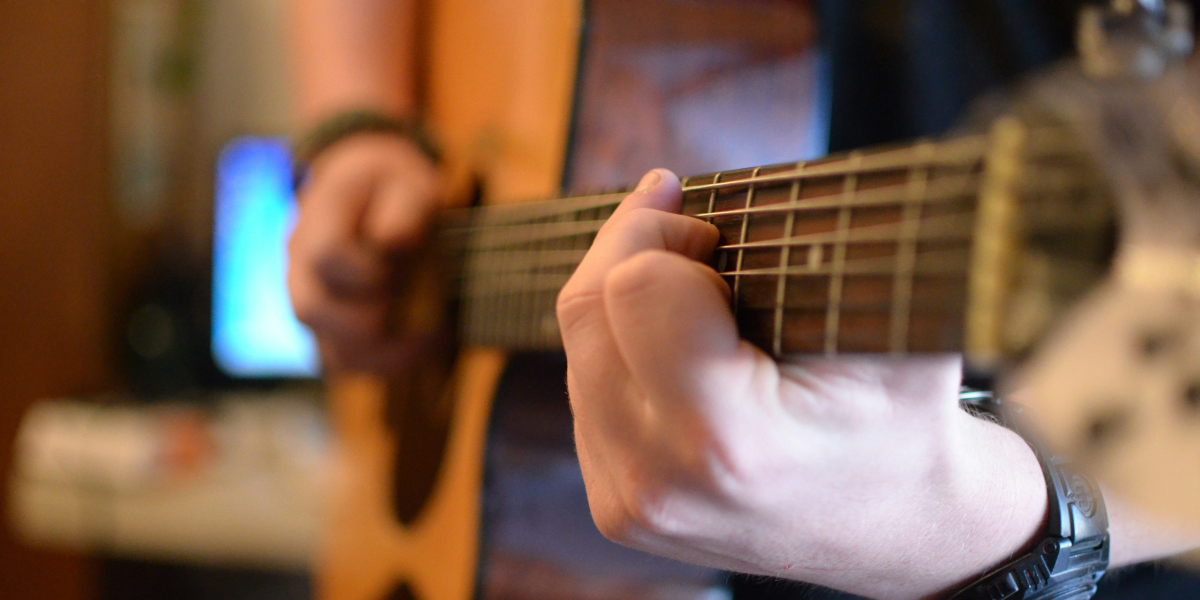The Art of Improvisation in Guitar Playing
Guitar improvisation is one of the most exciting and liberating skills a guitarist can develop. It allows musicians to express themselves spontaneously, crafting unique musical phrases in the moment. With practice and the right techniques, improvisation can transform a guitarist’s playing, opening up new possibilities for creativity and self-expression. This guide will walk you through fundamental approaches and exercises that can help guitarists of all levels improve their improvisational skills, ensuring that you can freely create music whenever you pick up your guitar.
Building a Strong Foundation: Scales and Modes
Improvisation on the guitar begins with understanding scales and modes, as they provide the structure and framework for creating spontaneous melodies. Scales, such as the pentatonic and major scales, serve as essential tools for forming melodic lines. The pentatonic scale, for instance, is widely used in blues and rock genres and provides a simplified, five-note structure that makes improvisation more approachable.
To start, practice each scale in different positions along the fretboard. Focus on connecting these positions to move seamlessly across the neck during a solo. Experiment with various modes, such as Dorian and Mixolydian, to add different moods and textures to your improvisation. Building familiarity with these scales will give you a vocabulary of notes you can pull from effortlessly, allowing for smoother, more dynamic solos.
Chord Progressions and Understanding Harmony
Another crucial aspect of improvisation is understanding chord progressions and harmony. Chord progressions provide a backdrop for improvisation and set the mood for the solo. By understanding a song’s chord structure, you can select notes that complement each chord, creating a harmonious flow within your improvisation.
To practice, start with a simple progression, like a 12-bar blues or an I-IV-V progression. As you play, listen to how each note interacts with the chords. Experiment with different note choices to see how they affect the overall sound and feel of the music. Learning to play “inside” and “outside” the chords—meaning sometimes sticking to notes within the chord and other times exploring notes outside it—can add depth and tension to your solos.
Rhythm and Timing: The Pulse of Improvisation
Rhythm is a vital component of improvisation. Mastering rhythm and timing allows you to place your notes effectively within the beat, creating cohesive and intentional phrasing. Practicing with a metronome can help build your sense of timing, ensuring that your improvisations stay in sync with the rhythm section.
Try practicing different rhythmic patterns and varying the lengths of your notes. For instance, you could incorporate syncopation, which involves placing accents on the off-beats to create a more dynamic feel. By experimenting with rhythm, you can make your improvisation more engaging and add energy to your performance.
Melodic Development: Crafting Memorable Solos
Great improvisation is more than just playing a series of notes—it involves creating a musical narrative. One effective way to achieve this is through melodic development, which involves building and expanding upon a musical idea throughout your solo. Start by playing a simple melodic line and then gradually add variations, such as changing the pitch, rhythm, or phrasing.
Think of your solo as a story with a beginning, middle, and end. Start with a simple phrase, develop it by adding variations, and bring it to a satisfying conclusion. This approach not only makes your solo more memorable but also helps engage the listener, as they can follow the progression of your musical ideas.
Expressive Techniques: Bends, Slides, and Vibrato
Adding expressive techniques like bends, slides, and vibrato can give your improvisation a unique character. These techniques allow you to add emotional depth to your playing, making each note feel purposeful. A well-placed bend or a smooth slide between notes can evoke a range of feelings, from tension to release.
Practice these techniques separately, then incorporate them into your improvisation to see how they change the tone and feel of your solo. For example, a gentle vibrato at the end of a phrase can add warmth, while a strong bend can introduce a sense of urgency. Experimenting with these expressions will enable you to convey your emotions more effectively through your guitar.
Exercises for Building Improvisational Skills
To develop your improvisational skills, it’s essential to practice with intention. Here are a few exercises designed to help you build spontaneity and fluency:
Scale Practice Across the Fretboard: Choose a scale and practice it in different positions across the fretboard. This helps build familiarity with the entire neck, enabling you to move freely while improvising.
Chord Tone Targeting: Play over a simple chord progression and aim to hit specific chord tones with each chord change. This exercise will improve your ability to create harmonizing solos with the backing chords.
Rhythmic Variation: Set a metronome and practice improvising, focusing on varying rhythms. Play with syncopation, triplets, and different note durations to build rhythmic creativity.
Call and Response: Record yourself playing a short phrase, then improvise a “response” phrase. This call-and-response exercise helps you develop conversational phrasing in your solos.
Backing Track Practice: Find a backing track in your preferred genre and improvise over it. This exercise allows you to experiment with different scales, modes, and techniques in a structured musical setting, helping you grow comfortable improvising in real time.
Unlocking Creative Freedom
Guitar improvisation is a journey of self-expression, creativity, and technical skill. With a strong foundation in scales, rhythm, melodic development, and expressive techniques, you can transform your playing and discover new musical dimensions. Through dedicated practice and mindful exploration, improvisation becomes an empowering tool that allows you to express your musical identity with freedom and confidence.
Remember, mastering improvisation is gradual, so enjoy the journey and celebrate each step of progress. By practicing these techniques and exercises, you’ll build a skill set that enhances your guitar playing and brings endless enjoyment and satisfaction. Unlock your creative potential and let your guitar solos uniquely tell your own story.
Published by: Annie P.














